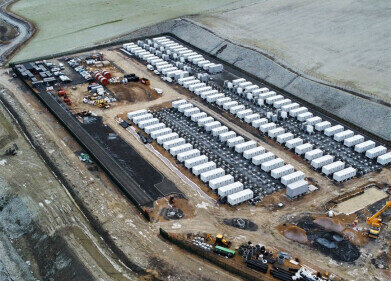Green Energy
Could Google’s New Wind Turbine Power 300 Homes?
Jan 16 2015
Makani, a 600-kilowatt wind turbine based on the concept of kiteboarding, is currently under development at Google's research and development lab, Google X.
The concept came to Google's attention ten years ago when kiteboarding pioneer, Don Montague demonstrated an idea he'd hatched in order to become the fastest person to circumnavigate the globe to Google founders, Larry Page and Sergey Brin.
Montague's idea was to use cable a large parafoil to a 65-foot catamaran, which would hopefully fly 250 feet in the air. In an interview with Outside Magazine, Montague said, “I was showing them how much power was actually available at higher altitudes, and I said, ‘Look, I can even generate electricity,’?
“They said, ‘Don, don’t waste your time sailing around the world. Let’s save the world.’?”
How does the Makani work?
The idea behind the Makani is a simple one: the higher the altitude, the more reliable and strong the wind gets. The project hopes that their second generation 600-kilowatt turbine - which is held aloft by the wind much like a kite and uses propellers to generate electricity - will be able to generate enough electricity to power 300 homes in the future.
The project is also currently testing a 20-kilowatt turbine inspired by airplane design, which rotates in the air in a similar manner to a parafoil. With carbon-fiber wings which are 27 feet wide, it is able to reach heights of up to 1,300 feet - a huge feat compared to traditional land-based turbines which are 500 feet tall at most.
Much like ground-based turbines, the project foresees airborne turbines grouped together by the dozen or even the hundred, and when the wind is unable to keep the wings aloft, the turbines will be reeled in to a docking station.
Will the Makani be the first airborne turbine to market?
Google X's Makani is not the only project working on this concept: there are a number of other projects across the globe that are striving to unlock the wind's potential in producing electricity, from propeller-based designs which use helium to stay aloft to large quadcopters that produce energy with spinning blades.
Kite Power, a joint initiative between the Netherlands' Delft University of Technology and Karlsruhe University of Applied Sciences, is a similar project to the Makani in which a tethered inflatable wing generates electricity. Roland Schmehl, a professor at Delft University said, “While classic turbines are facing physical and economic limits, airborne wind energy shows interesting potential."
However, other projects do not have the same financial backing as the Makani. While the Makani’s creator, Don Montague left the company to pursue his kiteboarding dreams, he remains confident that the Makani will be the first to market with a commercially viable airborne wind turbine.
More From Google…
Did you know that Google has a science fair? Recent winner, 18-year-old Canadian Hayley Todesco, created a device that would break down one of the main toxins found in tar sands. You can read all about this story in: Toxic Tar Sands Conquered by Teenager’s Fifth Grade Science Memories.
Events
Apr 22 2024 Hannover, Germany
Apr 23 2024 Kuala Lumpur, Malaysia
Apr 24 2024 Sao Paulo, Brasil
May 05 2024 Seville, Spain
May 13 2024 Munich, Germany














